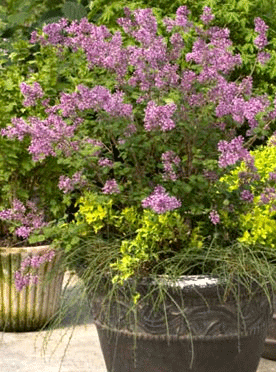 For showy seasonal changes in the yard, fruit trees are hard to beat. In spring they exuberantly burst forth with an abundance of blossoms, offer cool shade on hot summer days, and their fabulous fall foliage helps to make autumn the best season in Arizona’s mountains.
For showy seasonal changes in the yard, fruit trees are hard to beat. In spring they exuberantly burst forth with an abundance of blossoms, offer cool shade on hot summer days, and their fabulous fall foliage helps to make autumn the best season in Arizona’s mountains.
Planting and caring for fruit trees is intimidating to gardeners not in the know. Part of these plants’ mystique lies in their size, as a standard fruit tree can grow to a height of 30 feet. Fortunately, alternatives exist to these fruiting giants. Although a semi-dwarf tree is a mere 18-20 feet tall, that still is pretty tall for some gardens. Even a genetic dwarf, the shortest of all the fruiting trees, which can reach 12 feet at maturity, is still too much fruit tree for me. With my trusty pruners and just a little effort I can end up with an easy to handle source of fruit.
To keep fruit trees as tall and as manageable a mass as I want, I simply prune them in late summer to hedge height and again in late winter for shaping detail. Getting them more like a hedge and less like commercial production trees results in a manageable size that is better suited to a residential backyard.
When allowed unrestricted growth fruit trees reach extreme heights and the resultant colossal bounty of fruit produced is equally as overwhelming. Honestly, how many apples do you eat in a year, and what are you going to do when your landscape produces 300+ apples that need to be picked in a two-week period of time? We all know the answer to that question. We give them to friends, family, and neighbors until they won’t answer the door when they see us coming because they still have fruit from our last visit! By keeping fruit trees smaller they yield a more reasonable production of 50-90 fruits per season. Smaller trees allow for more fruit varieties to be planted and extend the harvest from late spring to early winter. The combo of reduced quantity and longer harvest makes this idea well worth consideration.
Here’s another interesting suggestion. Instead of planting a hedgerow of cotoneaster, or red-tipped photinia, plant a fruiting hedgerow. Sounds like a radical idea, I know, but it has proven to be quite effective and more manageable than freestanding trees. Allow each semi-dwarf tree to grow to hedge height and then no higher. Prune exactly as you would a large hedge, keeping the trees at 6-8 feet tall. At this height varieties are easy to pick, easy to spray, and easy to cover in case they begin to attract fruit-hungry birds.
Plant fruit trees just as you would any other trees or shrubs in the landscape. However, for really great fruiting top dress the roots with a 3” layer of shredded bark right after planting. The bark helps to maintain even soil temperatures, cool in summer and warmer through winter. Fruit trees will produce better with this additional landscaping step because roots thrive in more constant soil temperatures.
Carefully select the food you give to fruit trees. Be sure to choose something that is rich in phosphorus and lower in nitrogen. Too much nitrogen starves fruiting trees, especially when trying to keep them smaller. I really have good results by using organic foods on fruit trees; that is why I created my own “All Natural Plant Food”. It is the very best food for mountain plants, and a natural for increased fruit production.
Now through fall is the ideal time to plant fruit trees. Fruits for mountain home landscapes include apples, pears, cherries, peaches, nectarines, plums, persimmons, apricots, and figs. (Sorry, no citrus in the mountains.). To choose the tree to best meet your needs, do your homework or ask a professional the various fruiting times at the higher elevations of Arizona. I hand pick the varieties sold at my garden center specifically for their taste, soil adaptability, and late bloom cycles. Selecting from carefully chosen varieties increases the success of local harvests.
Fruits really do taste sweeter when tree-ripened instead of picked green to guarantee an extra week of market shelf life. There are only two ways to have great tasting fruits like you had as a kid: patronize your local farmer’s market or grow your own.
~~ ~~ ~~ ~~ ~~ ~~ ~~
Bloomerang Lilac was such a hit that growers ran out of the crop this spring. “No more in the fields to harvest” was the only answer to retailers’ requests for more of this beauty. The good news is that, although the new crop again is small, it is very hardy and starting to bud up nicely. This revolutionary new lilac delivers much more fragrance through its sheer volume of flowers. It blooms in spring like all other lilacs, but then flowers repeatedly all season long. No other lilac repeat blooms like Bloomerang. It delivers classic lilac beauty and fragrance for months instead of weeks. Many gardeners have it on their lists of ‘must-haves’ for this fall.
Until next week, I’ll see you in the garden center.


I am in need of a persimmon tree as a gift for someone living in the foothills of Kingman, Arizona. I was looking for one that can be used for cooking as well as eating the fruit. When will they be available? Thank you for any help you can give me.